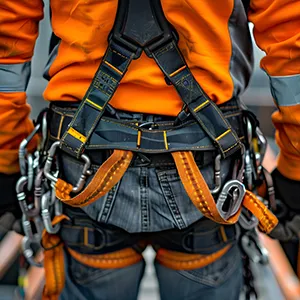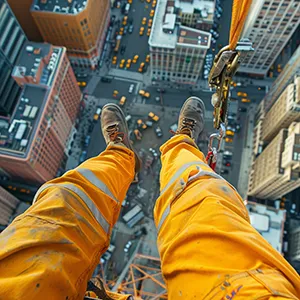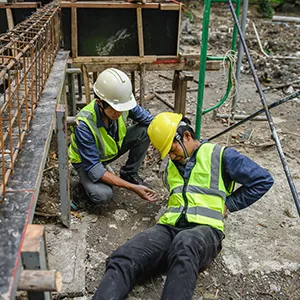Falls are the leading cause of death in the construction industry, accounting for nearly half of all fatal incidents on job sites. Despite being preventable, fall-related injuries and fatalities continue to occur at alarming rates. OSHA’s Fall Protection Standard (29 CFR 1926 Subpart M) outlines the requirements employers must follow to protect workers from fall hazards1.

OSHA’s Fall Protection Requirements
Under Subpart M, OSHA mandates that fall protection be provided at elevations of six feet or more in the construction industry1. Employers must implement one or more of the following systems:
- Guardrails: Must be 42 inches high (±3 inches) and withstand 200 pounds of force2.
- Safety nets: Installed as close as possible under the working surface.
- Personal fall arrest systems (PFAS): Includes harnesses, lanyards, and anchors rated for fall protection.
Additional requirements include:
- Covering and labeling floor holes
- Protecting edges and open-sided platforms
- Providing safe access via ladders, ramps, or walkways
Employers must also ensure that fall protection systems are in place before work begins.

The Scope of the Problem
1. Fall Fatalities in Construction
In 2023, 38.5% of all construction fatalities were due to falls, slips, and trips. The construction industry accounted for 47.8% of all fatal falls across all sectors3. Roofing contractors alone represented 26% of fall-related deaths, highlighting the elevated risk in certain trades3.
2. Nonfatal Injuries
Nonfatal falls to a lower level occurred at an annualized rate of 13.9 per 10,000 full-time workers in construction, compared to 4.6 across all private industries3. These injuries often result in extended time away from work, increased insurance costs, and reduced productivity.

Common OSHA Violations
Fall protection consistently ranks as the #1 most frequently cited OSHA violation4.
Common infractions include:
- Failure to provide fall protection at required heights
- Improper ladder use
- Missing guardrails
- Lack of training
These violations not only endanger workers but also expose employers to significant fines and legal liability.

The Importance of Training
Training is a cornerstone of fall prevention. OSHA requires that workers be trained to recognize fall hazards and use protective equipment properly1. Training must be provided in a language and vocabulary workers understand, especially in multilingual job sites.
According to the CDC, evidence-based fall prevention programs significantly reduce fall-related injuries when combined with hands-on instruction and regular refreshers5.
Employers should conduct:
- Initial and refresher training
- On-site demonstrations
- Toolbox talks focused on fall hazards

Best Practices for Employers
To maintain compliance and protect workers, employers should:
- Conduct daily inspections of fall protection systems
- Provide and maintain PPE
- Ensure supervisors are trained to enforce safety protocols
- Document training and inspections
- Encourage a culture of safety and accountability
Recommended OSHA Training Course(s):
Visit https://gbts.learnshare.com to view a full list of courses including the online OSHA 30-Hour construction course in both English and Spanish.
OSHA Outreach courses are provided in partnership with UL PureSafety, an OSHA-authorized online outreach provider. Meets OSHA and NYC Department of Buildings guidelines when actively proctored.
Contact Gallagher Bassett Technical Services at GBTSNYCinfo@gbtpa.com with any questions.
Sources
1: Occupational Safety and Health Administration. (n.d.). 1926 Subpart M – Fall Protection. U.S. Department of Labor. https://www.osha.gov/laws-regs/regulations/standardnumber/1926/1926subpartm
2: Occupational Safety and Health Administration. (n.d.). 1926.502 – Fall protection systems criteria and practices. https://www.osha.gov/laws-regs/regulations/standardnumber/1926/1926.502
3: Bureau of Labor Statistics. (2025). Fatal falls in the construction industry in 2023. https://www.bls.gov/opub/ted/2025/fatal-falls-in-the-construction-industry-in-2023.htm
4: Occupational Safety and Health Administration. (2024). Top 10 Most Frequently Cited Standards. https://www.osha.gov/top10citedstandards/
5: Centers for Disease Control and Prevention. (2015). Preventing Falls: A Guide to Implementing Effective Community-based Fall Prevention Programs. https://www.cdc.gov/falls/pdf/FallPreventionGuide-2015-a.pdf
